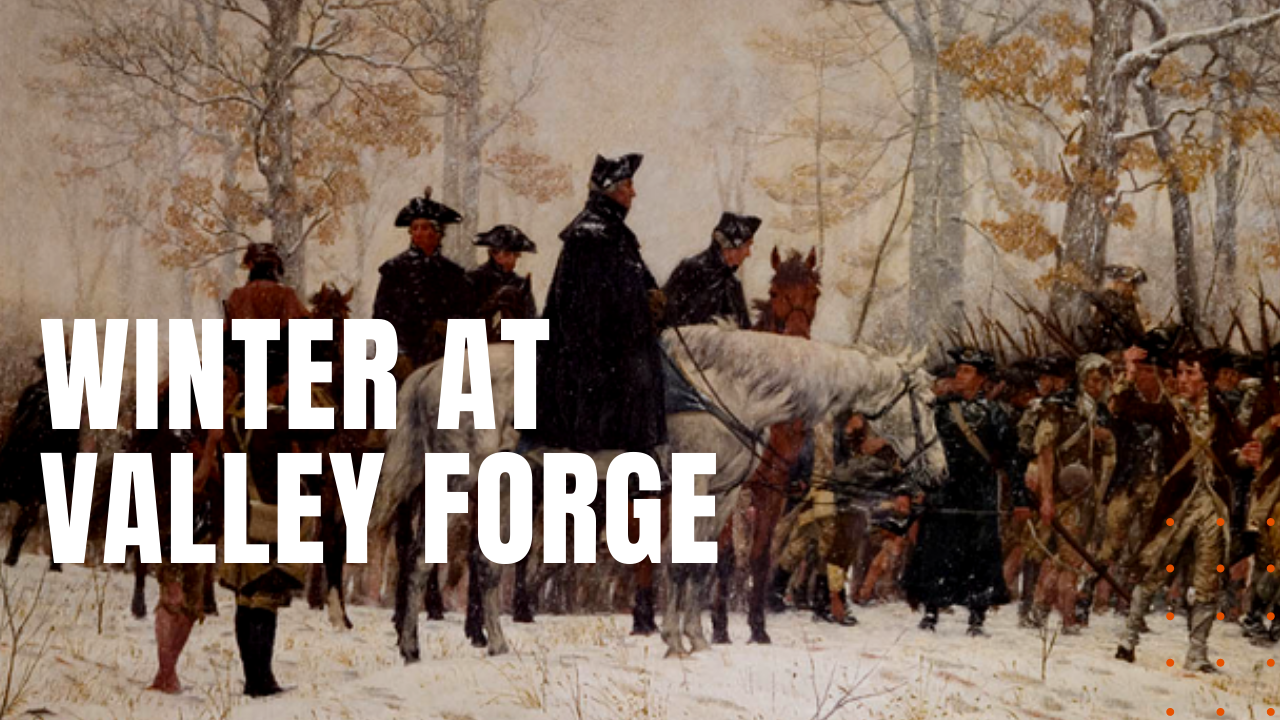Brutal Winter at Valley Forge

After the inconclusive Battle of Whitemarsh between the Redcoats and the Continental Army, American politicians and military leaders began to appreciate the need to defend the greater Philadelphia area from further British incursions.
Valley Forge Under General Washington
Having already lost control of Philadelphia to superior British forces, General George Washington conducted his 12,000-man army to Valley Forge for their winter quarters.
The location made perfect sense, providing Continental soldiers with ready defensive access to the countryside surrounding the city, while its proximity to the Schuylkill River made for an easy resupply route for food, ammunition, clothing and medical supplies.
While additional troops were quartered at seven other locations—including Wilmington, Delaware, Trenton, New Jersey and Radnor, Pennsylvania—Valley Forge would quarter the largest body of the Continental Army, as well as the place where winter misery and troop fatalities would reach their highest numbers.
The March to Valley Forge
The march to Valley Forge alone was an agonizing experience for the patriots, prompting Washington to write:
“To see men without clothes to cover their nakedness, without blankets to lay on, without shoes by which their marches might be traced by the blood from their feet, and almost as often without provisions as with; marching through frost and snow and at Christmas taking up their winter quarters within a day’s march of the enemy, without a house or hut to cover them till they could be built, and submitting to it without a murmur is a mark of patience and obedience which in my opinion can scarce be paralleled.”
George Washington
Life and Death at Valley Forge
While no accurate account exists for the number of log huts built at Valley Forge, most experts estimate a range between 1,300 to 1,600 structures, yet housing alone failed to eradicate the communal misery faced at Valley Forge.
Throughout the winter, patriot commanders and legislators faced enormous supply line challenges at Valley Forge, which was in truth the size of an average colonial city, minus the necessary infrastructures.
In large part, supplies dried up due to neglect by Congress, leaving Washington little resource to feed or to adequately clothe his soldiers. Soldiers and officers alike were put on half rations, while inbound perishable foods frequently rotted before reaching the troops due to poor storage, transportation snafus and rampant logistical mismanagement.
As a result, starvation and filth disease pandemics took the lives of more than 1,700 to 2,000 men, and perhaps as many as 1,500 horses. Years later, the Marquis de Lafayette recalled that:
“the unfortunate soldiers were in want of everything; they had neither coats, hats, shirts nor shoes; their feet and legs froze till they had become almost black, and it was often necessary to amputate them.”
By the Spring of 1778, Valley Forge bore the dubious distinction of tallying up the highest mortality rate of all the Continental Army’s winter encampments, including a higher death toll than nearly every military engagement fought during the Revolutionary War.
